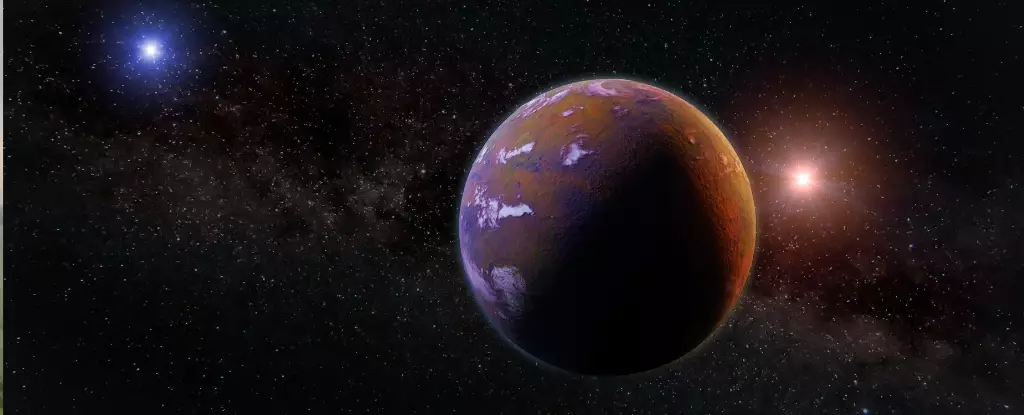In the vast and enigmatic cosmos, the formation of planets around young stars remains one of the most captivating mysteries. Traditionally, astronomers have relied on indirect methods—like analyzing star wobble or faint dips in stellar brightness—to infer the presence of distant worlds. Yet, these techniques often leave much to speculation, and the early stages of planet formation are typically concealed behind dense disks of gas and dust. With recent technological advancements, however, a new chapter has begun: direct imaging of planets in their nascent stages. This pivotal breakthrough allows scientists not just to infer the existence of planets but to witness their birth in real-time, revolutionizing our understanding of planetary genesis.
A Disruptive Breakthrough in Astronomical Observation
A remarkable recent discovery spotlighted the immense potential of cutting-edge telescopic technology. An international team led by Tomas Stolker utilized the Very Large Telescope’s sophisticated SPHERE instrument to directly image a young giant planet orbiting a star that had long been considered a barren celestial body. This star, HD 135344 A, is a luminous A-type main-sequence star approximately 440 light-years away, and notably, it had previously been ignored in planet surveys due to its apparent lack of a surrounding disk. This oversight was strategic; with no dusty cloak obscuring our view, the star’s planetary companions were more accessible to direct imaging—a method that captures actual photons emitted or reflected by the planets themselves.
This discovery challenges the conventional wisdom that planetary formation predominantly occurs in dust-enshrouded environments. It underscores that even stars that have seemingly concluded their planet-building phase can host young, massive planets on orbits comparable to our Solar System’s Jupiter. The detection was arduous, involving four years of patient and meticulous observation, highlighting both the dedication of astronomers and the limitations of current technology—limitations that, with ongoing advancements, are steadily diminishing.
Deciphering the Birth of a Giant Planet
The planet in question, HD 135344 Ab, is estimated to be around 12 million years old—an infant in cosmic terms—and possesses a mass roughly ten times that of Jupiter. Its orbit at approximately 15–20 astronomical units (AU) from its star places it within a key region often associated with planet formation, the so-called snow line. Here, icy bodies and volatile compounds like water, ammonia, and methane transition from gaseous to solid states. This creates an ideal environment for dust particles to coalesce and grow into planetary cores, especially giant planets relying on solid material accretion.
What makes this discovery truly groundbreaking is that it confirms giant planet formation can occur even after a star has cleared its protoplanetary disk—or at least when the disk is no longer detectable—implying that planet formation may sometimes be a more protracted and varied process than previously believed. The fact that the primary star has exhausted its dusty envelope while its companion’s disk remains active indicates that the timelines for planet formation can diverge dramatically within binary systems. These insights suggest that planetary birth is not a uniform process dictated solely by stellar age or disk presence but can be heavily influenced by local conditions and stochastic factors.
Challenges in Detection and Significance for Future Research
Detecting exoplanets through direct imaging is inherently complex. The overwhelming brightness of host stars often drowns out the faint glow of orbiting planets, and the thick dust and gas clouds make it challenging to isolate planet signals. The research team relied heavily on high-precision astrometric data from Gaia, which helped differentiate true planetary companions from background stars. Additionally, the fortunate orbital alignment of HD 135344 Ab—positioned at a favorable angle along its inclined orbit—was critical to its detection.
This success sets a promising precedent, particularly because giant planets at wider separations (beyond 20 AU) are scarce in direct imaging surveys; most known exoplanets are either closer or too faint to detect directly with current telescopes. With the upcoming Gaia Data Release 4 in 2026, the prospects become even brighter. This dataset promises to unveil hidden populations of young, close-in giant planets, guiding observational efforts in more targeted and efficient ways.
The discovery also underlines the importance of continuous technological upgrades. Next-generation telescopes like the Extremely Large Telescope (ELT), set to begin operations in 2029, will push these boundaries even further. With heightened sensitivity and resolution, astronomers will be able to dissect planetary atmospheres, analyze compositions, and directly observe formative processes in unprecedented detail. Such endeavors will deepen our fundamental understanding of how massive planets like HD 135344 Ab come into being and evolve.
Implications for Our Understanding of Planetary Evolution
This breakthrough invites a reevaluation of longstanding models of planet formation. The fact that a giant planet can exist around an ostensibly mature star—after its protoplanetary disk has largely dissipated—suggests that planet formation can extend well beyond the initial disk phase, or perhaps occur through alternative mechanisms. It raises questions about how often such planets form in the inner regions of solar systems and whether our detection biases have led us to underestimate their prevalence.
Furthermore, the observation reinforces that planetary systems are dynamic and diverse. Not all planets take the same path from dust to planet; some may form rapidly within dense disks, while others could emerge from more complex, prolonged, or stochastic processes. These nuances challenge the simplicity of existing models and push scientists to consider more multifaceted theories, accommodating the varied architectures observed.
The discovery of HD 135344 Ab is more than a mere addition to the exoplanet catalog; it is a powerful testament to technological progress and a catalyst for profound questions. Its magnetization lies in opening new avenues to explore planetary origins, demanding a reassessment of our assumptions and inspiring optimism that the universe still holds many secrets about how worlds like ours come to be.

